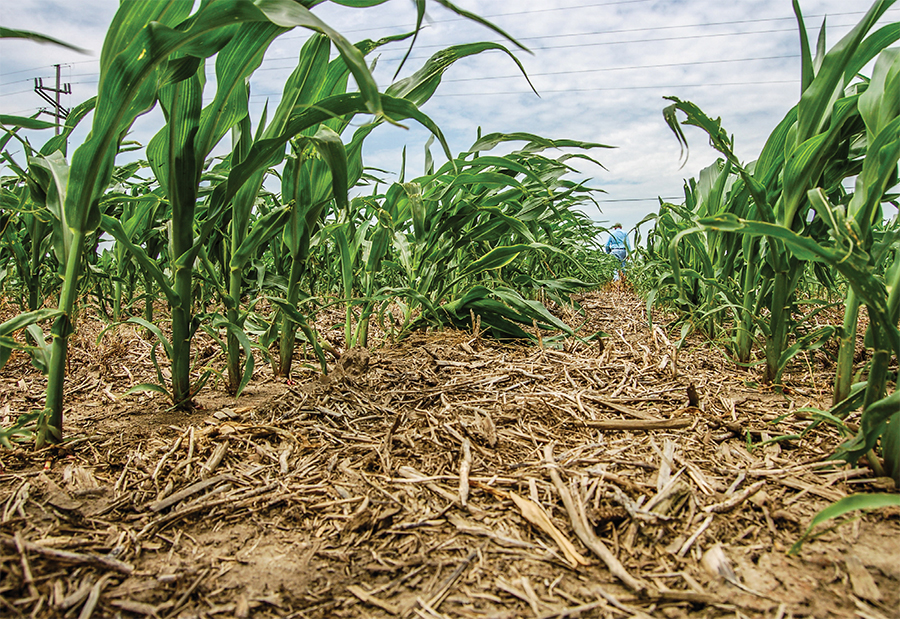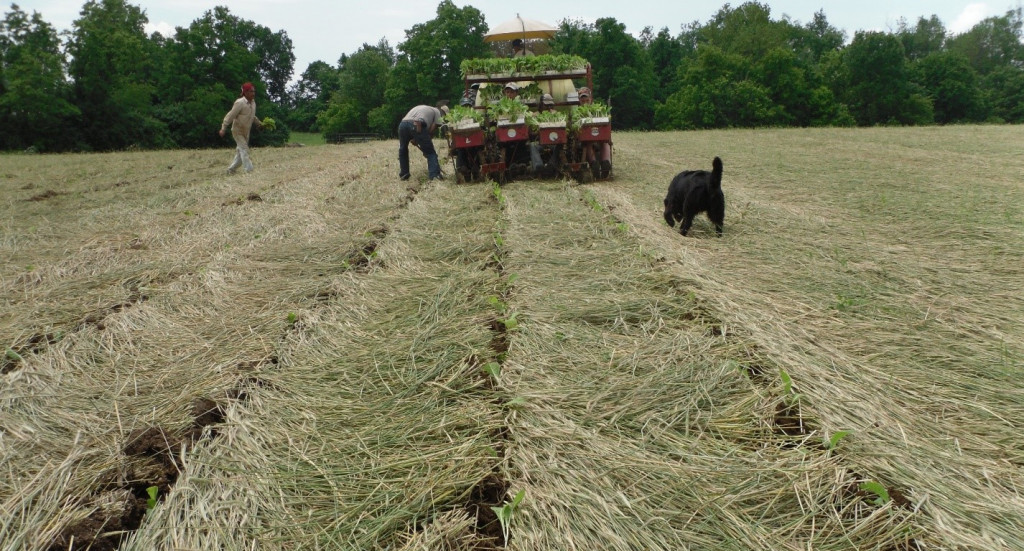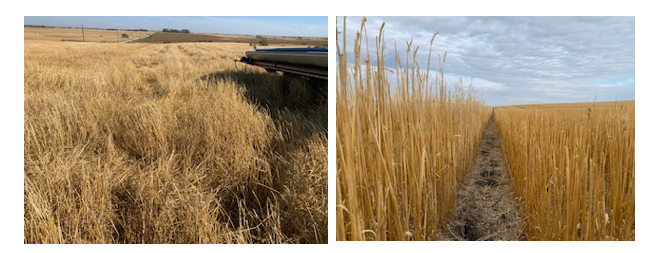
(Courtesy of No Till Farmer Magazine)

(Courtesy of No Till Farmer Magazine)
Organic, non-GMO, and cover crops dominate the narrative of crop standards that benefit consumers, the planet and soil health. But a growing sustainability and soil health practice missing from the conversation is “no-till” agriculture.
“No-till farming is a soil management system where you essentially do not disturb the soil prior to planting as is done in “conventional tillage,” said Roderick Rejesus, Ph.D. professor in the department of agricultural and resource economics at North Carolina State University.
As a result of not disturbing the soil, crops from the previous season are left behind to break down, further adding fertilizer to the ground.
The practice of tilling the soil is as old as agriculture and was practiced across the world. Tilling or digging anywhere from eight to 12 inches deep was thought to aerate the soil and remove weeds, preparing the soil for new planting.
The concept of not disturbing the soil took hold in the 1970s. Agronomists and soil scientists started to understand the micro ecosystems below ground were compromised by tilling and doing more harm than good, unable to fulfill their role in the natural cycle.
“80% of all the insects live in the first two-three inches of the soil,” said Ray Archuleta, a soil health expert and No-Till Innovator of the Year. “If you dig up the mesofauna you have to replace them and they contribute to the delicate nitrogen cycle. Mesofauna like protozoa and nematodes eat bacteria, and when they do they release nitrogen.”
Tilling not only disrupts the natural nitrogen fertilizer process that gives life to crops, but it also makes the soil more dry, leaving conditions ripe for erosion.

In a recent study, Rejesus analyzed how land values grow monetarily by adopting the practice of no-till.
Rejesus matched satellite data with land value data for 2007, 2012, 2017 covering 12 states. His study found a 1% increase in no-till adoption rate in the study states leads to an average increase of $7.86 per acre in agricultural land value.
No-till “curbs erosion, benefits soil organisms and adds to diversity, and creates a more stable internal structure. It requires 50-80% less fuel and 30-50% less labor, so its perceived as contributing to less cost,” he wrote.
Erosion has already stripped away about half of the topsoil on farmland across Illinois and Iowa, according to naturalists.
According to census data in Rejesus’ study, just 27% of the U.S. practices no-till and the U.S. ranked first among all countries in no-till acreage.
Holland farmer, Francis de Dobbelaere attended this year’s No-Till Farmer Conference in St. Louis to continue to learn about No-Till. Dobbelaere plans to incorporate this practice for the land he recently purchased in Latvia. Dobbelaere and his brother own and operate a farm that grows potatoes, onions, and grains, in Holland. When Dobbelaere and his brother move to their new 740-acre farm, in neighboring Latvia, it will be No-Till.
“Potatoes need to be plowed, so at our farm, Sia Karli, in Latvia, we will only grow wheat, canola, peas, barley, all winter crops,” said Dobblaere. “People in Latvia are not familiar with this [No-Till] practice. It is so efficient, low cost, with minimal employees.”
Kelly and DeAnna Lozensky own and operate Guardian Grains, a thriving 2,000-acre grain farm in Minot, North Dakota. One hour south of the Canadian border, the Lozensky’s grow heritage variety grains and stone-mill their flours to sell to a local commodity market.
“[No-Till] is at the foundation of everything we do,” DeAnna Lozenskey said. “We rely on soil biology to produce our crop. If I destroy the home of the underground workers, I have no underground workers to make my crop.”

The workers–or worms–and mesofauna that DeAnna Lozensky refers to are the result of switching to no-till in 2000 and fully removing nitrogen fertilizer in 2013.
At the time they also had 6,000-acres of farm. DeAnna and Kelly Lozensky experimented with not using fertilizer on 500 acres of their farm between 2000-2012. The results were encouraging.
In 2013 Guardian Grains cut out added fertilizer completely. At that time they reduced their farmland from 6,000-acres to 2,000-acres, yet still remained profitable in yields and income.
“We use the same two combine machines as we did with three times the amount of land,” said DeAnna Lozensky. “We are more profitable from the way we do things now.”
A fraction of a percentage of their yields goes toward making their own pasta from their grain. Their pasta is from a French heritage wheat, Rouge de Bordeaux, dating back to the 1800s.
Kelly and DeAnna Lozensky weren’t always a no-tillers. In 1999 when they first started farming, they tilled for one year.
“There was more labor in the one year that we tilled compared to years we didn’t,” Kelly Lozensky said.
Nitrogen fertilizer that runoffs from farms into waterways is a compounding issue that no-till farmers do not contribute to: eutrophication.
Because tilling the soil destroys organisms and mesofauna and disrupts the nitrogen cycle, farmers continue to buy nitrogen fertilizer to make up for the lull in the naturally occurring chemical element.
“Soil is the most complex ecosystem on the planet. A farmer’s goal should always be to emulate the natural system,” Archuleta said. “We can attribute eutrophication–an access amount of nutrients commonly known as algal blooms– in the gulf from the overuse of nitrogen fertilizers.”
According to Kelly Lozensky, tilling farmers are in a hurry to get nitrogen, but they just need to adopt no-till farming to achieve the same results.
“Human health depends on soil health so we better get it fixed,” Deanna Lozensky said.